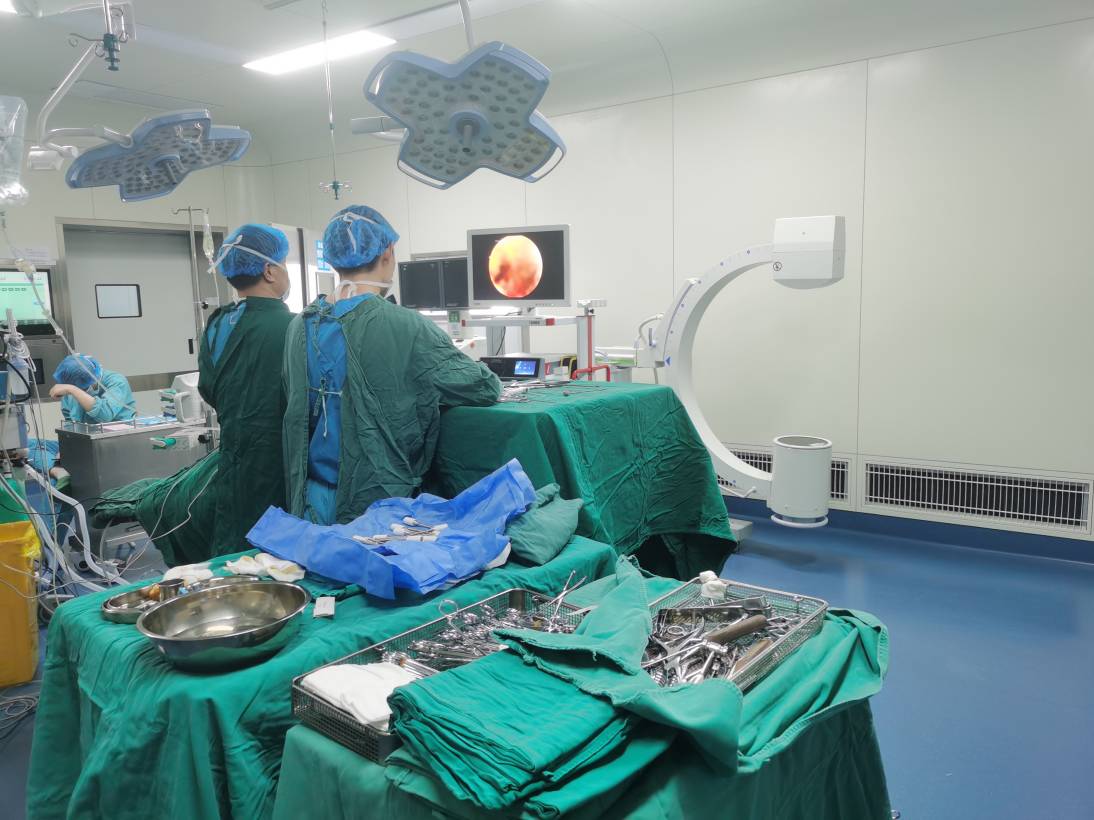- Shanghai, China
- [email protected]
- +86-21-58189111
Arthroscopy can see almost all parts of the joint, which is more comprehensive than cutting the joint. Because the image is enlarged, it can see more accurately, and the incision is small, the trauma is small, the scar is less, the recovery is faster, and the complications are less. In some cases, after anesthesia, you can go to the ground, which is of great benefit to the patient's confidence in overcoming the disease. For the diagnosis of difficult joint diseases and the treatment of joint pain that has plagued patients for many years, arthroscopic surgery can often achieve immediate results.
1. The incision is small and beautiful, which can avoid the irritation symptoms caused by scars on the joint surface and sports parts in the late stage;
2. It is a minimally invasive surgery, less pain, less postoperative reaction, and easy for patients to accept;
3. The limbs can be moved and used in the early postoperative period, avoiding long-term bedridden complications and reducing nursing staff and costs;
4. There are relatively few complications;
5. It basically does not affect the muscle structure around the joint, and functional exercise can be carried out early after the operation to prevent the disuse and complications caused by the long-term fixation of the joint;
6. It is possible to observe and examine intra-articular lesions in a nearly physiological environment. It is called "putting the eyes and fingers into the joints". It can perform dynamic inspections on the joints and improve the diagnostic ability. Some diseases such as synovium Fold syndrome, established only by arthroscopy;
7. Arthroscopy can perform operations that were difficult to complete with open surgery in the past, such as partial meniscectomy.

1. Diagnostic role
First of all, arthroscopy can be used to examine various lesions in the joint cavity, and to evaluate and record the conditions of various tissue structures in the joint in detail. Some joint lesions, such as pigmented villonodular synovitis, have characteristic arthroscopic manifestations. A diagnosis is almost possible. At the same time, synovial fluid or diseased tissue can also be obtained, biopsied to obtain pathological tissue under arthroscopic monitoring, and further laboratory and pathological examinations.
However, in recent years, various non-invasive examinations have continued to develop, especially the development of imaging examinations such as B-ultrasound, CT and MRI. In clinical practice, arthroscopy, which is purely for diagnosis, has been used less and less. However, arthroscopy can observe and explore the lesions under direct vision, and has a certain magnification effect, and dynamic observation is also possible, which has irreplaceable advantages. have application value.
2. Therapeutic effect
In addition to the treatment of various sports injuries, arthroscopy can also play an important role in the surgical treatment of arthritis. According to literature reports, arthroscopic techniques can be used in the diagnosis and treatment of various arthritis such as osteoarthritis, inflammatory joints, pigmented villonodular synovitis, crystalline arthropathy, infectious arthritis and traumatic arthritis. treat. For example, for various types of synovitis, arthroscopic synovectomy can be performed. In the knee joint, a posterior approach can be used to remove the synovial tissue in the posterior joint capsule to achieve the purpose of total joint capsular synovectomy. For bony joints, joint debridement can be performed to remove loose bodies, remove torn meniscus, and repair cartilage surfaces.
3. Extra-articular applications
Due to the advantages of small damage and quick recovery, arthroscopic technology is especially suitable for patients with high requirements for the morphology of the lesion site. Therefore, in recent years, it has been gradually extended to the treatment of extra-articular diseases. Following the advent of microscopic plate removal, removal of lateral epicondylitis and gluteal fascial contracture, the treatment of prepatellar bursitis, prepatellar bursa hematoma, subcutaneous hematoma, greater trochanteric bursitis, supraspinatus tendon calcification, Popliteal cysts, torticollis, and extra-articular cystic masses are also increasingly treated with arthroscopic surgery. The follow-up results show that this therapy is simple and easy to operate, with small scars, light response and quick recovery. It can not only achieve the same effect as open surgery, but also avoid the shortcomings of traditional treatment methods.
Leave a Comments